If you’re new to road biking, you might be wondering what tire pressure is best for your bike. The answer isn’t always simple, as there are a few factors to consider. The most important factor is your weight, as heavier riders will need higher pressure to avoid flats. Other factors include the type of terrain you’ll be riding on and the width of your tires. With a little trial and error, you’ll be able to find the perfect tire pressure for your next ride.
What is the Recommended Tire Pressure for a Road Bike? (With Weight + Other Factors)
However, the ideal tire pressure for a road bike depends on the rider’s weight, the type of bike, the terrain, and other factors. It is generally accepted that road bike tire pressure should be between 80 and 130 PSI, with some experts recommending a range of 85 to 115 PSI.
For example, a heavier rider will need higher tire pressure than a lighter rider. A bike designed for racing on smooth pavement will need different tire pressure than a bike designed for off-road riding. And, of course, the terrain you’re riding on will affect the ideal tire pressure.
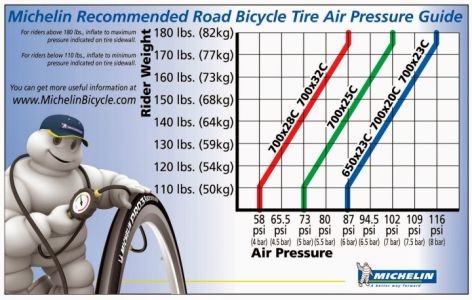
So, what is the recommended tire pressure for a road bike? The answer is, it depends. But here are some general guidelines to help you get started.
Is There A Correlation Between Tire Pressure and Bike Performance?
A higher pressure is often thought to result in a faster bike, while a lower pressure is thought to provide more traction and comfort. Some studies have shown that there is a correlation between tire pressure and bike performance, while other studies have shown that there is no correlation. The truth is likely somewhere in the middle, and the best way to determine the ideal tire pressure for your bike is to experiment and see what works best for you. It is widely believed that tire pressure has a direct effect on a road bike’s performance. However, there is no definitive answer as to whether tire pressure actually has an effect on bike performance.
Factors that Affect the Tire Pressure
There are a number of factors that affect the tire pressure of a road bike. The terrain is also a factor. If it is cold, the air in your tires will contract and you will need to add some air. The weather can also affect tire pressure. If you are riding on rough roads, you will need more air in your tires to avoid punctures. If it is very hot, the air in your tires will expand and you will need to let some out. The weight of the rider is one of the most important factors. Heavier riders will need more air in their tires to avoid pinch flats.
The Material Used to Make the Tire
Second, the material used to make the tire affects the weight of the tire. The material used to make the tire is one of the most important factors that affect the tire pressure. The stiffness of the tire affects the amount of pressure that the tire can hold. First, the material used to make the tire affects the stiffness of the tire. The weight of the tire affects the amount of pressure that the tire can hold. The material used to make the tire affects the tire pressure in two ways.
This means that the tire does not need a lot of pressure to support the weight of the bike. Rubber is a good material for the tire because it is very stiff. The most common material used to make the tire is rubber. This means that the tire can hold a lot of pressure. Rubber is also a good material for the tire because it is very light.
Kevlar is a good material for the tire because it is very light. This means that the tire does not need a lot of pressure to support the weight of the bike. This means that the tire can hold a lot of pressure. Another material that is sometimes used to make the tire is Kevlar. Kevlar is also a good material for the tire because it is very stiff.
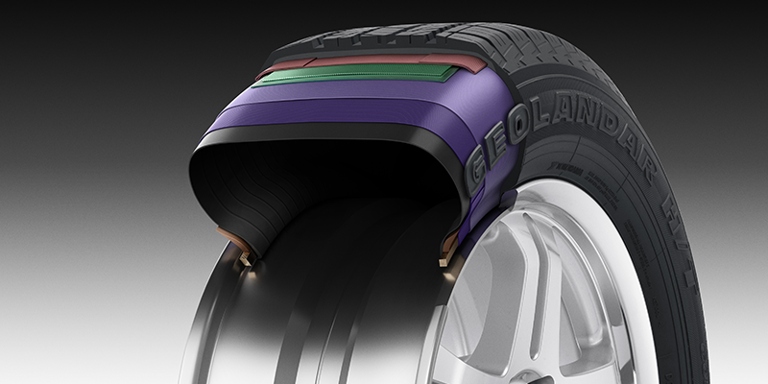
Second, the material used to make the tire affects the weight of the tire. The material used to make the tire is one of the most important factors that affect the tire pressure. The stiffness of the tire affects the amount of pressure that the tire can hold. First, the material used to make the tire affects the stiffness of the tire. The weight of the tire affects the amount of pressure that the tire can hold. The material used to make the tire affects the tire pressure in two ways.
The Size of the Tire
The weight of the bike also affects the pressure. The terrain you are riding on also affects the pressure. There are a few factors that affect the tire pressure of a road bike. A heavier bike will need more pressure than a lighter bike. The size of the tire is one factor. A wider tire will have a lower pressure than a narrower tire. If you are riding on a rough road, you will need more pressure than if you are riding on a smooth road.
Weight Distribution and System Weight
Other factors that can affect the tire pressure are the type of terrain you are riding on and the weather conditions. A heavier bike will have higher pressure in the tires than a lighter bike. The amount of weight on the bike also affects the pressure. The distribution of weight on a road bike affects the tire pressure. The rear wheel carries more weight than the front, so the pressure in the rear tire will be higher.
Road Conditions
There are a variety of factors that affect the tire pressure of a road bike. Heavier riders will need more pressure in their tires to avoid pinch flats. Smooth, paved roads require less pressure than rougher terrain. Lighter riders can get away with less pressure. The weight of the rider is one of the primary factors. The type of terrain you’re riding on is also a factor.
The width of your tires is also a factor. This is because there is more contact area between the tire and the ground. Wider tires require more pressure than narrower ones. This increases the risk of a flat tire.

Warmer temperatures cause the air to expand, which raises the pressure. Colder temperatures cause the air inside the tire to contract, which lowers the pressure. The weather can also affect tire pressure.
Tires that are in good condition will hold more pressure than tires that are worn or damaged. Finally, the condition of your tires will affect the pressure.
Temperature and Weather
There are a variety of factors that affect the tire pressure of a road bike. The terrain is also a factor. The weather can also affect tire pressure. Cold weather can cause the air in your tires to expand, while hot weather can cause the air to contract. If you are riding on rough roads, you will need more pressure in your tires. The weight of the rider is one of the most important factors. Heavier riders will need more pressure in their tires to avoid pinch flats.
Tubeless Tires
Tubeless tires are becoming increasingly popular for road bikes as they offer a number of advantages over traditional clincher tires. One of the main benefits of tubeless tires is that they can be run at lower pressures without the risk of pinch flats. This is because there is no inner tube to bulge out and get pinched between the tire and rim.
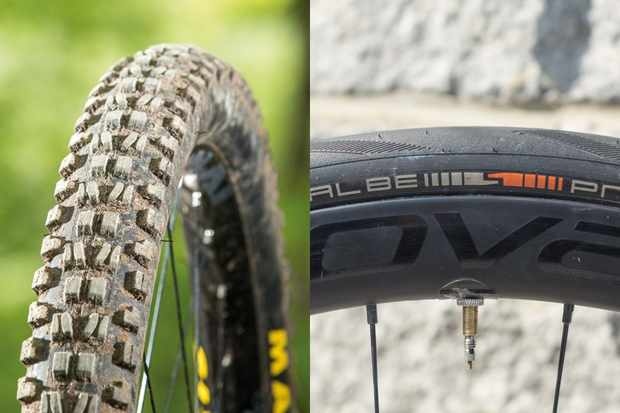
Running tubeless tires at lower pressures can also improve grip and comfort as well as reducing rolling resistance. However, it’s important to experiment to find the right pressure for your particular set-up as too low a pressure can cause the tire to squirm and too high a pressure will decrease grip and comfort.
This is because the wider tire has a larger contact patch with the ground, so there is less chance of the tire rolling over and pinch flats occurring. For example, wider tires can be run at lower pressures than narrower tires without the risk of pinch flats. There are a number of other factors that can affect tire pressure, such as the width of the tire, the type of terrain you’ll be riding on, and the conditions of the roads.
If you’re planning on riding on rough terrain, you’ll need to increase the pressure to prevent the tire from being punctured by sharp objects. And if you’ll be riding on roads that are in poor condition, you’ll also need to increase the pressure to avoid the risk of punctures.
Ultimately, it’s important to experiment to find the right pressure for your particular set-up and riding conditions. Start with the recommended pressure from your tire manufacturer and then adjust up or down based on your own preferences and experiences.
How to Check Tire Pressure?
It’s important to check your tire pressure regularly to ensure a safe and comfortable ride. Here are a few tips on how to check your tire pressure:
– Use a tire pressure gauge to check the pressure of your tires. You can find a tire pressure gauge at most auto parts stores.
– Check your tire pressure when your tires are cold. This means checking your tire pressure before you’ve driven your vehicle for at least a few hours.
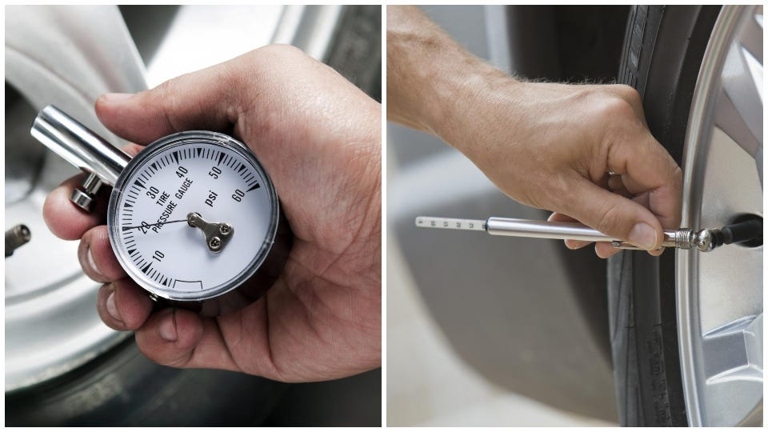
– Use the recommended pressure for your tires. You can find this information in your vehicle’s owner’s manual or on the placard located on the driver’s door.
Can You Check Tire Pressure Without Owning a Gauge?
If you’re wondering how to check tire pressure without owning a gauge, the answer is actually quite simple. All you need is a reliable source of air, such as a compressor, and a way to measure the amount of air you’re putting into the tire.
The first step is to remove the valve cap from the tire you want to check. Make sure that the air is turned off before you do this. Next, take your air source and hold it up to the valve. Slowly add air to the tire until it is at the desired pressure. Once the tire is inflated, put the valve cap back on.
If it doesn’t, add or release air until it does. Now, take your measuring device and place it over the valve. Press down on the tire until the measuring device reads the correct tire pressure. This could be a ruler, a tape measure, or even just your hand if you don’t have anything else.
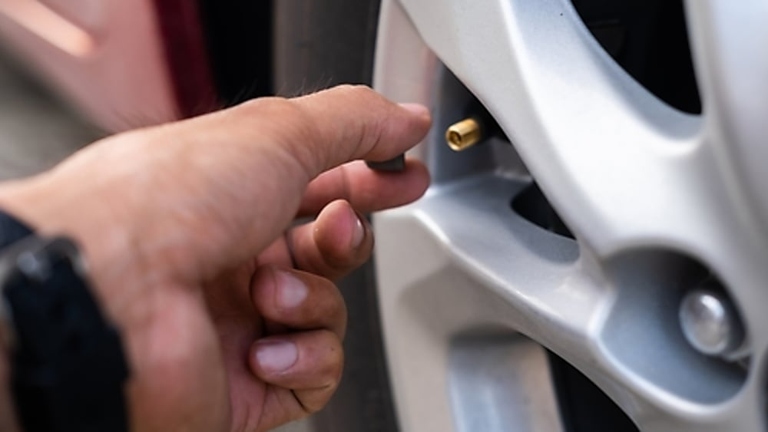
And that’s all there is to it! Checking tire pressure without owning a gauge is easy as long as you have a reliable air source and a way to measure the amount of air you’re putting into the tire.
Is It Necessary to Check the Tire Pressure Every Day?
However, it is important to check the pressure regularly to ensure that the tires are inflated properly. The best way to check tire pressure is to use a tire pressure gauge. It is not necessary to check the tire pressure every day.

To check the pressure with a tire pressure gauge, first make sure that the gauge is properly calibrated. Press the gauge firmly onto the valve and hold it there for a few seconds. Next, remove the valve cap from the tire and place the gauge on the valve. The reading on the gauge will indicate the pressure in the tire.
If the pressure in the tire is low, add air to the tire until it reaches the proper pressure. If the pressure in the tire is too high, release some air from the tire until it reaches the proper pressure.
The Bottom Line
While there is no one perfect tire pressure for all road biking situations, understanding the different factors that affect tire pressure can help you make the best decision for your individual needs. The bottom line of “Road Bike Tire Pressure By Weight + Other Factors” is that the best tire pressure for road biking is determined by a number of factors, including weight, terrain, and riding style.
Frequently Asked Questions
1. What is the ideal road bike tire pressure?
There is no definitive answer to this question as it depends on various factors such as rider weight, tire width, and terrain. A good starting point is to inflate your tires to around 80-90 psi for a road bike.
2. How does rider weight affect tire pressure?
The heavier the rider, the higher the tire pressure should be. This is because heavier riders put more pressure on the tires, which can cause them to flatten or even burst if the pressure is too low.
3. How does tire width affect tire pressure?
Wider tires require less pressure than narrower tires. This is because wider tires have more contact with the ground, which distribute the weight of the rider more evenly.
4. How does terrain affect tire pressure?
Rough terrain requires higher tire pressure as it can cause the tires to puncture more easily. Smooth terrain requires lower tire pressure as it puts less strain on the tires.
5. What is the maximum tire pressure?
The maximum tire pressure depends on the tire but is usually around 120 psi. It is important not to exceed the maximum tire pressure as it can cause the tire to burst.
Final thoughts
Road bike tire pressure is a complex topic with many different factors to consider. Weight, terrain, and weather all play a role in determining the perfect tire pressure for your ride. By taking all of these factors into account, you can ensure that you have a safe and enjoyable ride.
